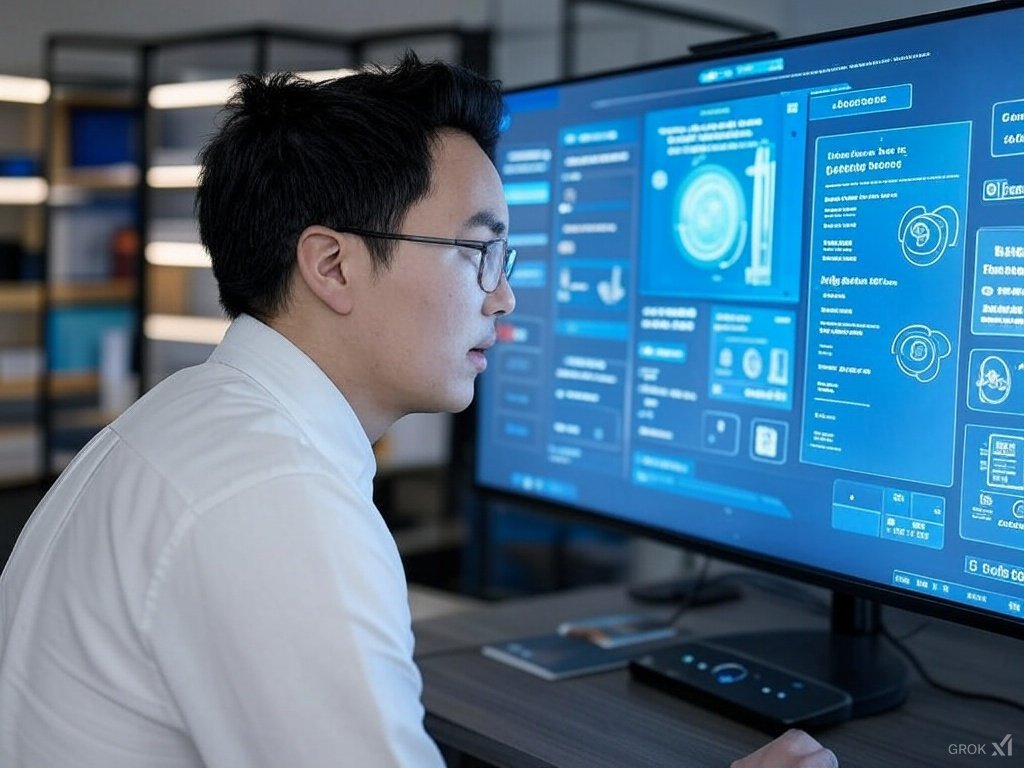AI Video: Revolutionizing Workplace Safety with Self-Learning

In today's rapidly evolving technological landscape, Artificial Intelligence (AI) is no longer a futuristic concept but a tangible reality impacting various aspects of our lives and industries. One of the most promising applications of AI lies in the realm of workplace safety, particularly through the use of self-learning video AI. This innovative technology is revolutionizing how organizations monitor, assess, and mitigate risks, leading to safer and more efficient work environments.
Self-learning video AI, powered by adaptive algorithms, represents a significant leap forward from traditional video surveillance systems. Unlike static systems that require predefined rules and configurations, self-learning AI can dynamically adapt to changing conditions and learn from new data in real-time. This adaptability makes it exceptionally well-suited for complex and dynamic work environments where safety hazards can arise unexpectedly.
This blog post will delve into the rise of self-learning video AI, exploring its underlying principles, key benefits, real-world applications, and future trends. We will also discuss how organizations can effectively implement this technology to enhance workplace safety and create a culture of proactive risk management. Join us as we uncover how adaptive algorithms are changing the game in workplace safety.
Understanding Self-Learning Video AI
At its core, self-learning video AI leverages a combination of computer vision, machine learning, and deep learning techniques to analyze video streams in real-time. Unlike traditional video analytics systems that rely on predefined rules and thresholds, self-learning AI can automatically learn patterns and anomalies from the data itself. This allows it to detect a wide range of safety hazards and unsafe behaviors without requiring extensive manual configuration.
Here's a breakdown of the key components:
- Computer Vision: Enables the AI to "see" and interpret images and videos, identifying objects, people, and actions.
- Machine Learning: Provides the AI with the ability to learn from data without being explicitly programmed. Algorithms are trained on vast datasets of video footage to recognize patterns and anomalies associated with safety hazards.
- Deep Learning: A subset of machine learning that uses artificial neural networks with multiple layers to analyze data at a more granular level. This enables the AI to identify subtle patterns and complex relationships that would be difficult for traditional algorithms to detect.
The adaptive nature of self-learning AI is what sets it apart. As the AI processes more data, it continuously refines its understanding of the environment and improves its ability to detect potential safety risks. This is particularly valuable in dynamic work environments where conditions can change rapidly.
Key Benefits for Workplace Safety
The adoption of self-learning video AI offers a multitude of benefits for organizations committed to enhancing workplace safety. Here are some of the most significant advantages:
- Real-Time Hazard Detection: The ability to identify safety hazards as they occur allows for immediate intervention and prevention of accidents.
- Proactive Risk Assessment: By analyzing patterns and trends in video data, the AI can predict potential risks and alert safety managers before incidents occur.
- Improved Compliance: Self-learning video AI can ensure adherence to safety regulations and protocols by monitoring employee behavior and identifying violations.
- Reduced Incident Rates: By proactively identifying and mitigating risks, organizations can significantly reduce the number of workplace accidents and injuries.
- Enhanced Training Effectiveness: Video AI can identify areas where employees may need additional training or reinforcement of safety procedures.
- Automated Reporting and Analytics: The AI can automatically generate reports and dashboards that provide valuable insights into safety performance and areas for improvement.

Real-World Applications Across Industries
Self-learning video AI is finding applications across a wide range of industries, each with its unique safety challenges. Here are a few examples:
- Manufacturing: Monitoring employee behavior around heavy machinery, detecting unsafe practices, and ensuring compliance with safety protocols.
- Construction: Identifying fall hazards, monitoring equipment operation, and ensuring proper use of personal protective equipment (PPE).
- Logistics and Transportation: Monitoring driver behavior, detecting fatigue, and preventing accidents involving forklifts and other vehicles.
- Healthcare: Monitoring patient safety, preventing falls, and ensuring compliance with infection control procedures.
- Retail: Preventing theft, monitoring customer behavior, and ensuring compliance with safety regulations.
In each of these applications, self-learning video AI provides a powerful tool for enhancing safety and reducing the risk of accidents and injuries.
Case Study: Enhancing Safety in a Manufacturing Plant
A large manufacturing plant implemented self-learning video AI to monitor employee behavior around robotic welding stations. The AI was trained to identify unsafe practices, such as bypassing safety guards or entering restricted areas. Within the first month of implementation, the AI detected several instances of unsafe behavior that had previously gone unnoticed. As a result, the plant was able to implement corrective actions, such as providing additional training and reinforcing safety procedures. This led to a significant reduction in near-miss incidents and a marked improvement in overall safety performance.
Implementing Self-Learning Video AI: Best Practices
Implementing self-learning video AI requires careful planning and execution. Here are some best practices to ensure a successful deployment:
- Define Clear Objectives: Identify the specific safety challenges you want to address and set clear, measurable goals for the AI implementation.
- Choose the Right Technology: Select a video AI platform that is specifically designed for workplace safety and that offers the features and capabilities you need.
- Ensure Data Privacy and Security: Implement robust data privacy and security measures to protect sensitive information.
- Train and Educate Employees: Provide employees with training on how the AI system works and how it will be used to enhance safety.
- Monitor and Evaluate Performance: Continuously monitor the performance of the AI system and make adjustments as needed to optimize its effectiveness.
The Future of Self-Learning Video AI in Workplace Safety
The future of self-learning video AI in workplace safety is bright. As AI technology continues to advance, we can expect to see even more sophisticated and effective solutions emerge. Here are some key trends to watch for:
- Increased Integration with Other Technologies: Self-learning video AI will be increasingly integrated with other workplace safety technologies, such as wearable sensors and IoT devices, to create a more comprehensive and proactive safety ecosystem.
- Enhanced Edge Computing Capabilities: Edge computing will enable video AI to process data closer to the source, reducing latency and improving real-time performance.
- Greater Focus on Human-AI Collaboration: Future solutions will emphasize collaboration between humans and AI, leveraging the strengths of both to create more effective safety interventions.
- Expansion into New Applications: Self-learning video AI will be applied to a wider range of workplace safety challenges, such as monitoring employee fatigue, detecting signs of stress, and preventing workplace violence.
Self-learning video AI is transforming workplace safety by providing organizations with a powerful tool for proactively identifying and mitigating risks. Its adaptive nature, real-time capabilities, and ability to learn from data make it exceptionally well-suited for complex and dynamic work environments. By implementing this technology effectively, organizations can create safer and more efficient workplaces, reduce incident rates, and improve overall safety performance.
As AI technology continues to evolve, we can expect to see even more innovative and impactful applications of self-learning video AI in the years to come. The future of workplace safety is undoubtedly intertwined with the advancement of these intelligent and adaptive systems.
Ready to explore the power of adaptive algorithms? Star our GitHub project Securade Hub today!